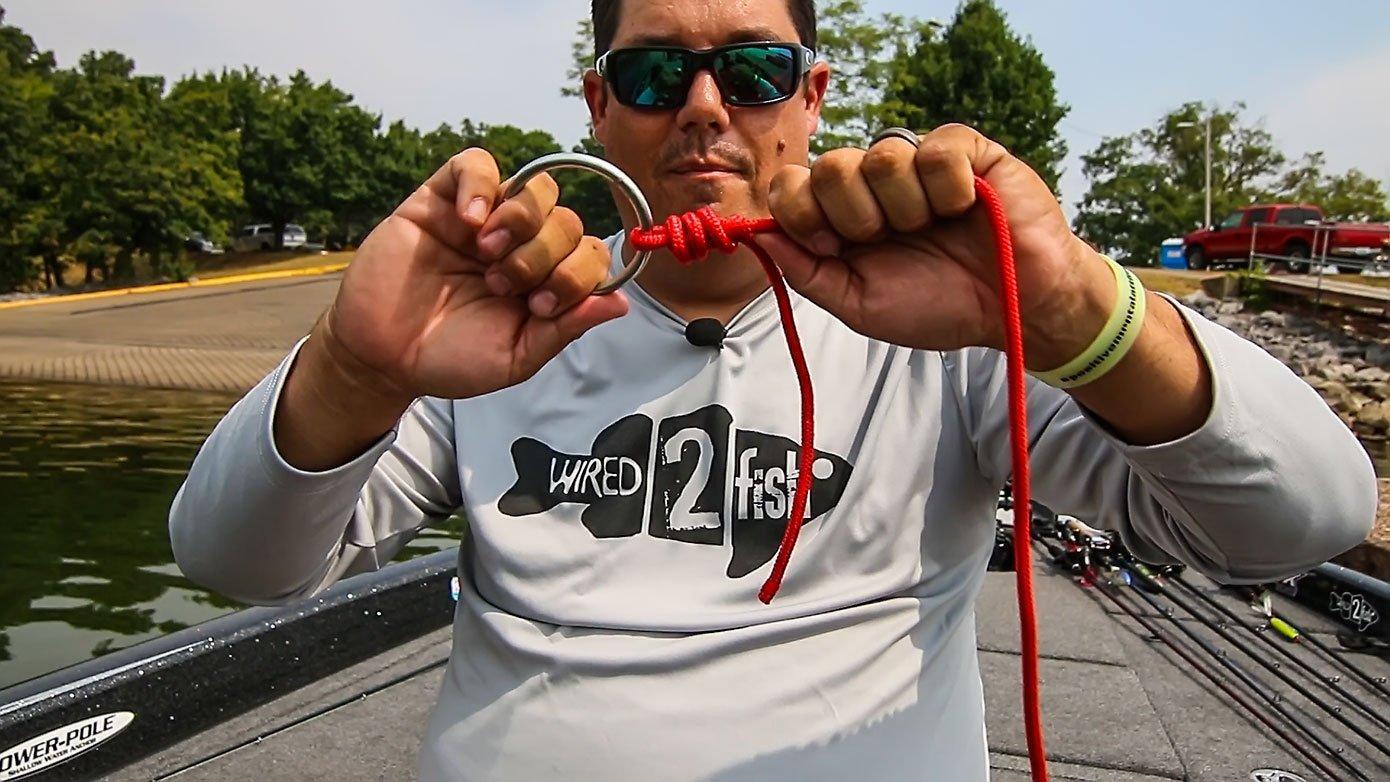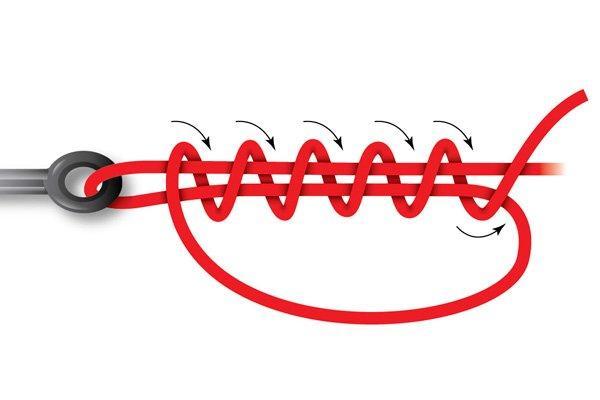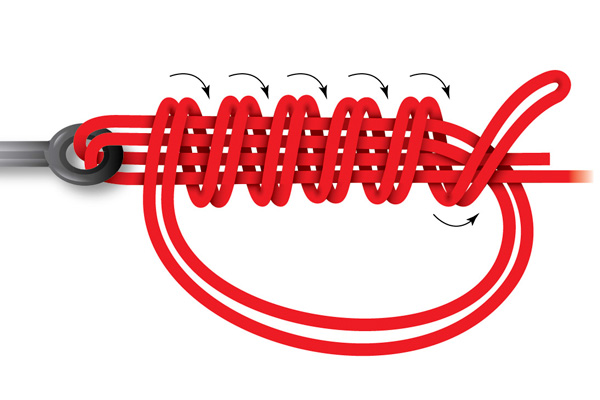The uni knot is one of the oldest and most reliable fishing knots, saltwater and freshwater alike. The knot works on 100-pound test and bluefin tuna as well as it does 6-pound test and thumper crappie. Not only that but how to tie the uni knot, or uni-slip knot as it is sometimes called, is very easy to learn with a little practice. I’ve tried several dozen knots over the course of 40 years of fishing, and I tie the uni-knot day in and day out because I trust it so much. The video above is me tying it and sharing some of my experiences to get a solid knot every time.
How to tie a Uni Knot – step by step
Tying a uni knot for fishing basically involves 4 steps:
- Run the line through the eye and bring it parallel to your main line.
- With your tag end create a loop big enough to wrap the tag around inside.
- Wrap the tag around the doubled line a minimum of 5 times.
- Wet the line and pull it all down tight, managing the wraps as you do.
Step 1
Pass the line through the eye; then run it parallel to the main line.
Step 2
Loop the tag back towards the eye with enough tag end line left over to wrap around the double lines.
Step 3
Now loop the tag end around the two straight lines and inside the loop you created with it. Wrap up the lines away from the hook eye being careful not to overlap any loops. You will learn to hold the eye with your pinky and ring finger on your left hand and hold the two lines with your pinky and thumb on your right hand and then you use your index fingers to wrap the wraps.
Step 4
For the final step on the uni knot, wet the wraps and line real well and pull the tag end and to tighten the knot down. Before you get it real tight slide it down to the eye. Then pull everything tight by pulling the tag, main and eye all together.
This makes a very strong knot by itself but you can actually make it even stronger on smaller lines.
Variations of the Uni Knot
Another variation of the uni knot, the double line uni knot is simply what it implies, doubling the line and tying a uni with the line doubled. It gives you more coverage of knot on your lure or hook and makes a stronger knot, but it is easier to get your wraps messed up with this much line, so you need to take care to slide your wraps evenly together as you tighten it.
See also double uni knot for attaching two fishing lines together.
How To Tie the Double Line Uni Knot
Step 1
Start by doubling your line and pinching it to keep it together so you can easily pass it through the eye. Pass the doubled line through the eyelet.
Step 2
Bring it up the main line several inches and then loop it back down. Grab the doubled sets of lines and your doubled tag end separately so that you can wrap the pinched doubled end through the loop you just created.
Step 3
Loop it through 4-7 times depending on your line diameter and bring it out the top with your main line. If your line is thicker, 4 wraps will do. If your line is a small diameter, 7 wraps will give it more strength.
Step 4
Slowly pull the moistened lines tight by the loop first, being careful to line up your wraps and avoiding any crossing or bunching. Then pull the main line and the tag end together to slide your wraps down to the eyelet. Pull the tag end and loop to tighten your wraps, then pull the main line to tighten the knot.
When to Use Uni Knots for Fishing
A uni knot works for every kind of fishing from crappie to catfish. If you want a knot with your mainline coming straight out of the top of the knot straight out of the top of the eye, this is the knot to master. While an improved clinch wraps around the outside of your lines, the uni knot somewhat wraps inside of your lines. It makes for a really clean, narrow knot that doesn’t catch moss or grass as easily. And it’s incredibly strong. Aaron Martens tried to convert everyone to it for years as he saw the power of it on the tuna boats off the coast of California. The doubled uni was his go-to knot for light line applications where he was using line smaller than 10 pounds. When he showed me, I was convinced, and it’s still the knot I tie the most. Here’s Aaron tying the uni and double line uni knot for bass fishing.


















